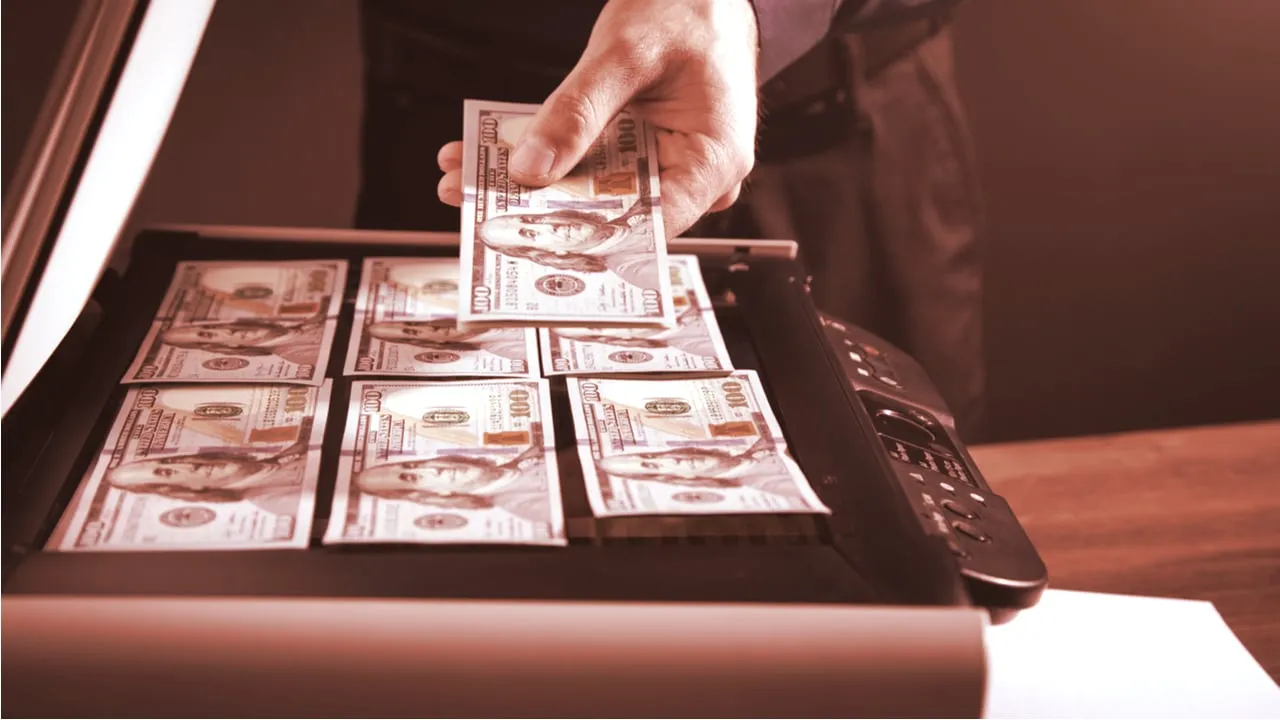In brief
- Terra's stablecoin tokenomics led to the network's collapse.
- Tron's algorithmic stablecoin playbook looks strikingly similar.
Tron blockchain creator Justin Sun announced via Twitter today that traders can now earn rewards for depositing the network's recently launched USDD, an algorithmic stablecoin designed to work like Terra's all-but-defunct UST, to Tron-based lending protocol JustLend.
For depositing USDD, they'll earn yield in both USDD and the JUST stablecoin.
JustLend is a lending protocol on Tron akin to, say, Compound on Ethereum. But whereas Compound currently offers APY rates mostly in the low single digits, JustLend is advertising rates as high as 30%—though JUST also pointed to 70% earnings, and the rate has been adjusting throughout the day. (Tron representatives have not yet responded to a Decrypt request for comment on how the yield works.) That's about 10 to 20 percentage points more than Terra's own lending protocol, Anchor, was offering before a liquidity crisis there led to a bank run that took down the network.
Tron's move is straight out of the Terra playbook—at least the one that was written before Terra's native token LUNA and UST stablecoin collapsed.
#USDD mining is live now on https://t.co/AzvfhEjc3G with 40% APR. You can now deposit your #USDD in Justlend. pic.twitter.com/6WhX9fhpEP
— H.E. Justin Sun 🅣🌞🇬🇩 (@justinsuntron) May 12, 2022
Last month, Sun announced that Tron DAO, the ostensibly user-controlled organization that makes governance decisions about the network, would begin issuing a decentralized stablecoin backed by TRX.
Wrote Sun at the time: "When USDD's price is lower than 1 USD, users and arbitrageurs can send 1 USDD to the system and receive 1 USD worth of TRX. When USDD's price is higher than 1 USD, users and arbitrageurs can send 1 USD worth of TRX to the decentralized system and receive 1 USDD."
That's exactly the same system that Terra uses.
Moreover, to keep the system propped up, Terra’s UST needed a utility. That was provided by Anchor Protocol, which was funded by the Luna Foundation Guard—set up by Terra's founders to promote development of the ecosystem. Anchor rewarded people for depositing their UST stablecoins. As interest rates began declining, users hopped off the tram, redeemed their UST for LUNA, dumped LUNA, and caused a massive death spiral that caused the entire network to implode and contributed to a larger crypto market crash.
But Sun and Tron have a backup plan—the same one Kwon and Terra had. While Sun was announcing USDD, Tron DAO announced that it was seeking $10 billion in assets for a reserve to be used in case of a financial crisis. That's the same target Luna Foundation Guard set for its reserve. Of course, Terra was only able to raise $3 billion in a combination of Bitcoin, Avalanche, UST, and LUNA. And that wasn't enough to stop the collapse of an $18 billion stablecoin and $30 billion network token.
The knock on Tron and Sun from the outset has been that it's derivative. Many observers pointed out that Tron's white paper was suspiciously similar to the Ethereum white paper. Tron's 2020 embrace of DeFi also bore many of the hallmarks of Ethereum's.
"We are creating the same kind of DeFi ecosystem as Ethereum," Sun said in October 2020. "All the Ethereum network products, you can see a same version of Tron products. For example, the MakerDAO on Tron is called JustStable, created by the JUST team. And UniSwap is called JustSwap." (The team behind JUST, which also created JustLend, is unnamed.)
To be fair, Tron didn't copy Ethereum's proof-of-work consensus mechanism or sluggish speeds. It boasts transactions per seconds in the thousands; its basic selling point has been that it can accommodate all the things Ethereum can while doing it faster and cheaper. (Whether it can do so while making the network more decentralized and without running into security problems is up for debate.)
Its pivot to embrace Terra's tokenomics is in the same vein: Like Terra but better and bigger interest rates. Hopefully without the big bust at the end.
There are plenty waiting to laugh off the move—Sun has attracted negative press for reported mismanagement of software firm BitTorrent and crypto exchange Poloniex, both of which he owns. Moreover, his copy pasta reputation still haunts him.
But they probably shouldn't.
Though it has been affected by this month's crypto crash, Tron has weathered the storm better than most. It now ranks 14th in market cap among all crypto assets, between Wrapped Bitcoin and Shiba Inu, with $7.25 billion.
For the moment, USDD has a much smaller footprint within the larger crypto ecosystem, with just $271 million in circulation—but it's already surpassed Gemini Dollar after launching just last week.
Terra, host of the third-largest stablecoin, was still large enough to wreak havoc for holders across assets. If Tron keeps up the growth spurt and the USDD experiment fails, there's no good recovery strategy for Sun to imitate.

